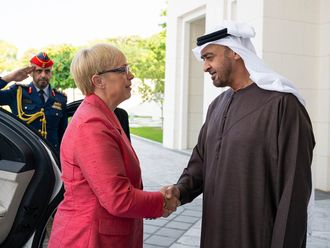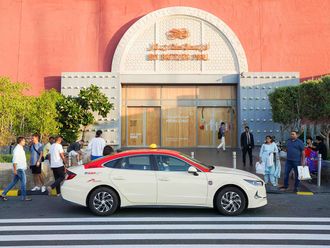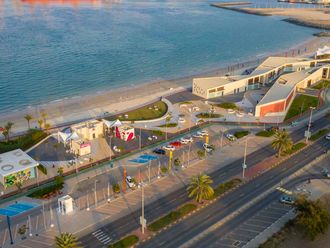Abu Dhabi: The 2010 General Census in the UAE will be held from April 5 to 15, a top official said Tuesday.
"The attributive night on April 5, a common reference point, will be adopted by the Gulf Cooperation Council (GCC) member countries in conducting a joint census for the first time next year," said Major General Khalifa Hareb Al Khaili, assistant undersecretary at the Ministry of Interior.
The UAE's population will cross the five-million-mark at the end of this year for the first time since the federation was established nearly 38 years ago, according to official figures released by the Ministry of Economy in April.
The figures showed the bulk of the increase of nearly 300,000 people will be in the dominant expatriate community.
From about 4.765 million at the end of 2008, the country's total population will peak at nearly 5.066 million at the end of 2009, an annual growth of around 6.3 per cent, the Ministry of Economy said.
Al Khaili, who is also chairman of the media committee of the 2010 census, reviewed various aspects of the census and specific time-lines of the media plan.
Calling the census "a national programme aimed at building a reliable and strategic database," Al Khaili said it will focus on population research, evaluating variations in number, and researching the qualitative, marital and professional composition of the UAE residents.
A breakdown showed the national population will grow from about 892,000 at the end of 2008 to 923,000 at the end of 2009, while expatriates will increase from about 3.873 million to 4.143 million.
Dubai was the most populated emirate at the end of 2008 after overtaking Abu Dhabi for the first time, with its population peaking at around 1.596 million. It is expected to surge by about 7.8 per cent to 1.722 million at the end of 2009, the highest growth rate in the UAE.
Abu Dhabi, the largest emirate by area, had the second highest population of about 1.559 million, which is projected to reach 1.628 million at the end of 2009. But the emirate's female population was much higher, standing at 539,000 at the end of 2008 compared with 376,000 for Dubai.
The figures showed Sharjah was the third most populated emirate with about 946,000 people at the end of 2008. It is expected to have 1.017 million people at the end of 2009.
Ajman had the fourth largest population of 237,000 at the end of 2008 and is expected to maintain this position at the end of 2009 as its population is projected to grow to about 250,000, according to the Ministry.
Ras Al Khaimah's population was estimated at nearly 231,000 at the end of 2008 and 241,000 at the end of 2009. It stood at 143,000 at the end of 2008 and 152,000 at the end of 2009 in Fujairah, and about 53,000 at the end of 2008 and 56,000 at the end of 2009 in Umm Al Quwain.










